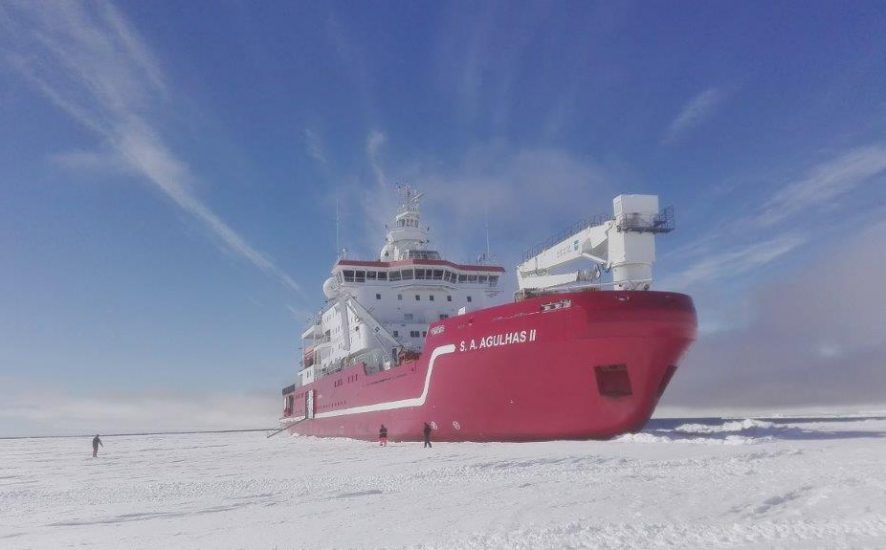
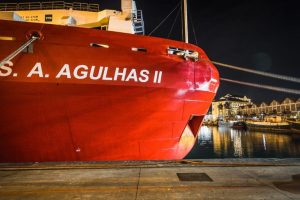 The S. A. Agulhas II is a South Africa icebreaking polar supply and research vessel. The vessel was designed to carry out both scientific research and supply South Africa’ research stations in the Antarctic. The Port of Cape Town has always been prominent in visits by vessels of explorers, on their way to Antarctica, and more recently by those performing research in Antarctica and the Southern Ocean. The British polar explorer Ernest Shackleton visited the Port in 1901. Captain Robert Scott also called at the Port during his attempt to get to the South Pole in 1910.
The S. A. Agulhas II is a South Africa icebreaking polar supply and research vessel. The vessel was designed to carry out both scientific research and supply South Africa’ research stations in the Antarctic. The Port of Cape Town has always been prominent in visits by vessels of explorers, on their way to Antarctica, and more recently by those performing research in Antarctica and the Southern Ocean. The British polar explorer Ernest Shackleton visited the Port in 1901. Captain Robert Scott also called at the Port during his attempt to get to the South Pole in 1910.
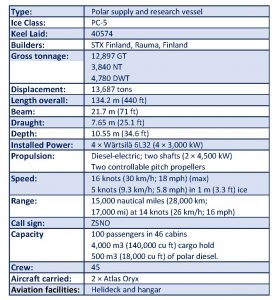
 The arrival of South Africa’s new polar research and supply vessel, the S.A. Agulhas II, in early May 2012, marked a significant step forward for the country’s potential contributions to Antarctic and sub-Antarctic marine science. A successful Antarctic programme requires means to cross thousands of kilometres of the world’s stormiest seas, to navigate through Antarctica’s formidable sea ice barrier, and to live and work for extended periods on the coldest, driest and windiest continent on earth.
The arrival of South Africa’s new polar research and supply vessel, the S.A. Agulhas II, in early May 2012, marked a significant step forward for the country’s potential contributions to Antarctic and sub-Antarctic marine science. A successful Antarctic programme requires means to cross thousands of kilometres of the world’s stormiest seas, to navigate through Antarctica’s formidable sea ice barrier, and to live and work for extended periods on the coldest, driest and windiest continent on earth.
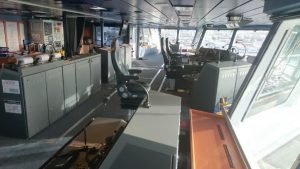
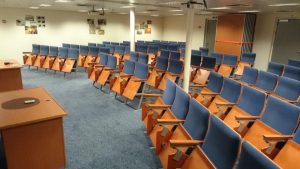
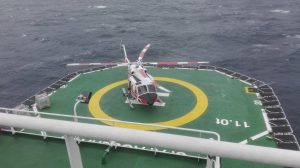 The new ship has far greater research capabilities than its predecessor, the S.A Agulhas. By facilitating state-of-the-art research and the establishment of collaborations with international organisations and institutions, these world-class facilities strengthen South Africa’s capacity to fulfil legal obligations under key international agreements such as the Antarctic Treaty System, CCAMLR, the ACAP, the CCAS and the ICRW.
The new ship has far greater research capabilities than its predecessor, the S.A Agulhas. By facilitating state-of-the-art research and the establishment of collaborations with international organisations and institutions, these world-class facilities strengthen South Africa’s capacity to fulfil legal obligations under key international agreements such as the Antarctic Treaty System, CCAMLR, the ACAP, the CCAS and the ICRW.
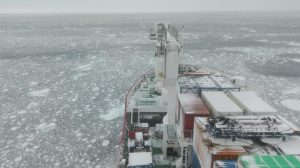

 The vessel comes equipped with eight fixed and six removable container laboratories specifically designed for oceanographic, climate change, meteorological, biodiversity, marine geology or geoscience and marine engineering research. A large hangar door on the side of the ship allows the lowering of deep-water sampling probes and a moon pool can be used for sampling when the ship is working in ice conditions. A drop keel containing transducers for the measurement of plankton density and ocean currents can be lowered through the bottom of the ship to a depth of 3 m below the keel. The ship’s stern also has a hydraulic A-frame for lowing sampling nets and dredges with an associated research poop deck including laboratory access for sample handling. A specially constructed masthead lookout station facilitates underway
The vessel comes equipped with eight fixed and six removable container laboratories specifically designed for oceanographic, climate change, meteorological, biodiversity, marine geology or geoscience and marine engineering research. A large hangar door on the side of the ship allows the lowering of deep-water sampling probes and a moon pool can be used for sampling when the ship is working in ice conditions. A drop keel containing transducers for the measurement of plankton density and ocean currents can be lowered through the bottom of the ship to a depth of 3 m below the keel. The ship’s stern also has a hydraulic A-frame for lowing sampling nets and dredges with an associated research poop deck including laboratory access for sample handling. A specially constructed masthead lookout station facilitates underway
observations of seabirds and marine mammals. From:” South African research in the Southern Ocean” article available on ALSA archive
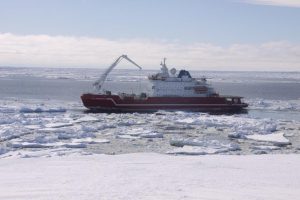 Browse the ALSA archive for the voyage schedules of the S.A. Agulhas II and to see more images of the vessel.
Browse the ALSA archive for the voyage schedules of the S.A. Agulhas II and to see more images of the vessel.
Photo credits: James Matthee, Julius Klette, Brendon Nickerson and Christof van Zijl.

